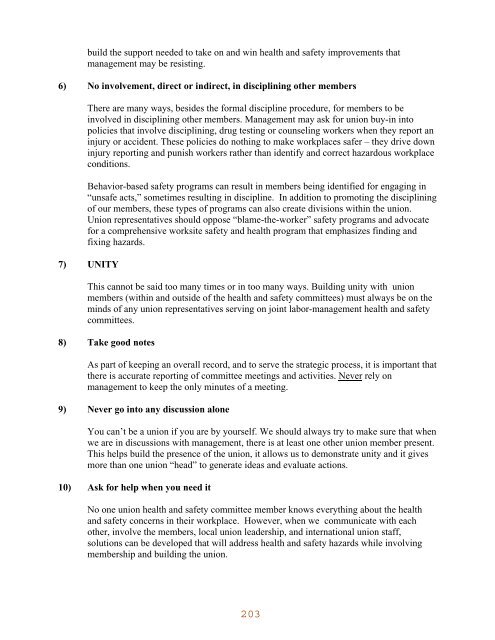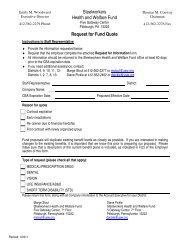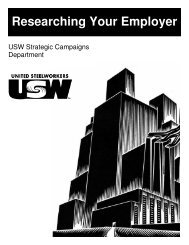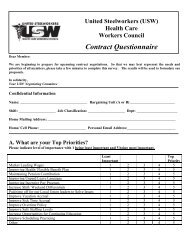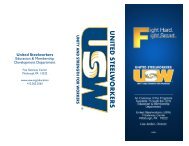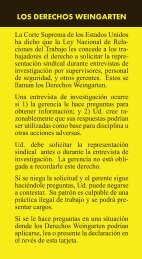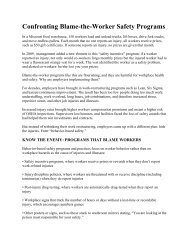Union Approach to Health and Safety: - United Steelworkers
Union Approach to Health and Safety: - United Steelworkers
Union Approach to Health and Safety: - United Steelworkers
Create successful ePaper yourself
Turn your PDF publications into a flip-book with our unique Google optimized e-Paper software.
uild the support needed <strong>to</strong> take on <strong>and</strong> win health <strong>and</strong> safety improvements that<br />
management may be resisting.<br />
6) No involvement, direct or indirect, in disciplining other members<br />
There are many ways, besides the formal discipline procedure, for members <strong>to</strong> be<br />
involved in disciplining other members. Management may ask for union buy-in in<strong>to</strong><br />
policies that involve disciplining, drug testing or counseling workers when they report an<br />
injury or accident. These policies do nothing <strong>to</strong> make workplaces safer – they drive down<br />
injury reporting <strong>and</strong> punish workers rather than identify <strong>and</strong> correct hazardous workplace<br />
conditions.<br />
Behavior-based safety programs can result in members being identified for engaging in<br />
“unsafe acts,” sometimes resulting in discipline. In addition <strong>to</strong> promoting the disciplining<br />
of our members, these types of programs can also create divisions within the union.<br />
<strong>Union</strong> representatives should oppose “blame-the-worker” safety programs <strong>and</strong> advocate<br />
for a comprehensive worksite safety <strong>and</strong> health program that emphasizes finding <strong>and</strong><br />
fixing hazards.<br />
7) UNITY<br />
This cannot be said <strong>to</strong>o many times or in <strong>to</strong>o many ways. Building unity with union<br />
members (within <strong>and</strong> outside of the health <strong>and</strong> safety committees) must always be on the<br />
minds of any union representatives serving on joint labor-management health <strong>and</strong> safety<br />
committees.<br />
8) Take good notes<br />
As part of keeping an overall record, <strong>and</strong> <strong>to</strong> serve the strategic process, it is important that<br />
there is accurate reporting of committee meetings <strong>and</strong> activities. Never rely on<br />
management <strong>to</strong> keep the only minutes of a meeting.<br />
9) Never go in<strong>to</strong> any discussion alone<br />
You can’t be a union if you are by yourself. We should always try <strong>to</strong> make sure that when<br />
we are in discussions with management, there is at least one other union member present.<br />
This helps build the presence of the union, it allows us <strong>to</strong> demonstrate unity <strong>and</strong> it gives<br />
more than one union “head” <strong>to</strong> generate ideas <strong>and</strong> evaluate actions.<br />
10) Ask for help when you need it<br />
No one union health <strong>and</strong> safety committee member knows everything about the health<br />
<strong>and</strong> safety concerns in their workplace. However, when we communicate with each<br />
other, involve the members, local union leadership, <strong>and</strong> international union staff,<br />
solutions can be developed that will address health <strong>and</strong> safety hazards while involving<br />
membership <strong>and</strong> building the union.


